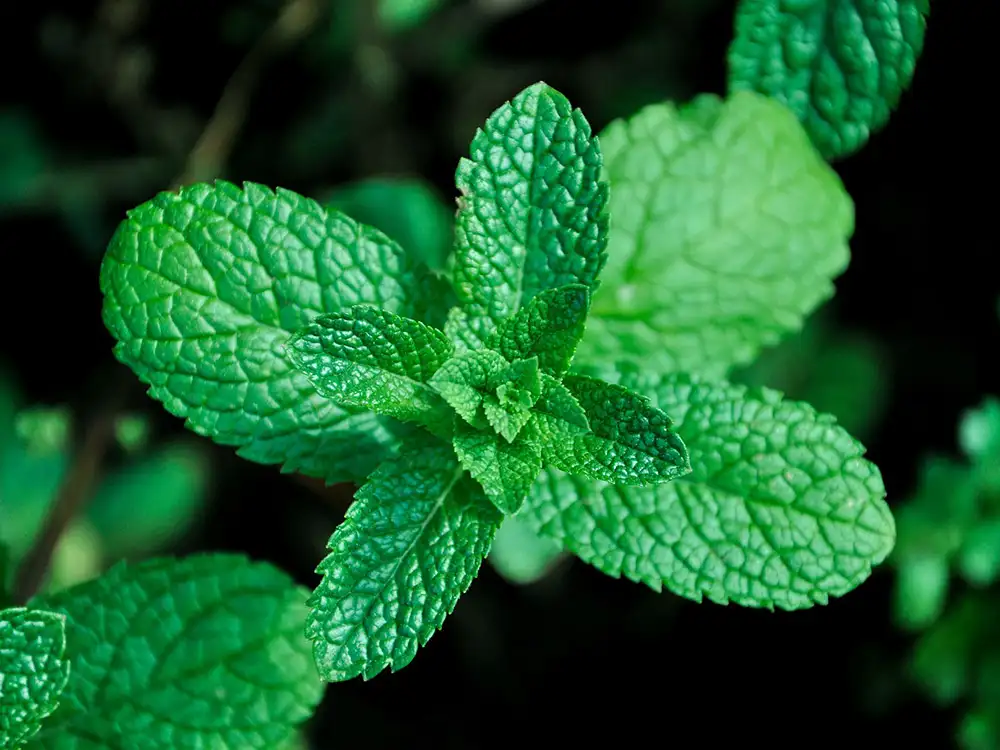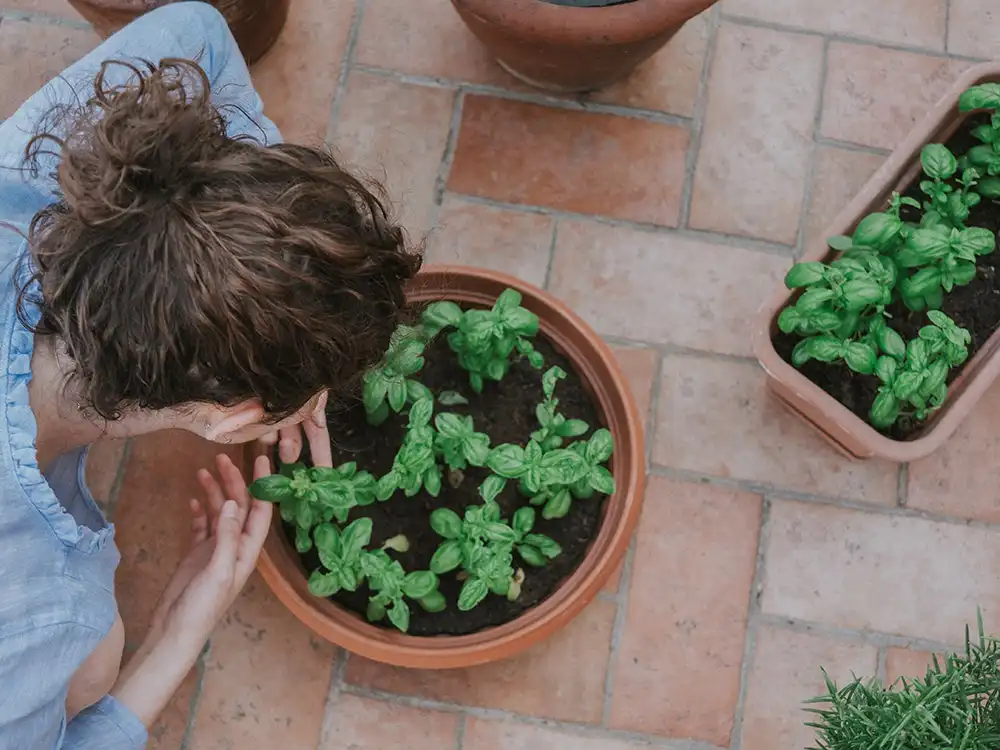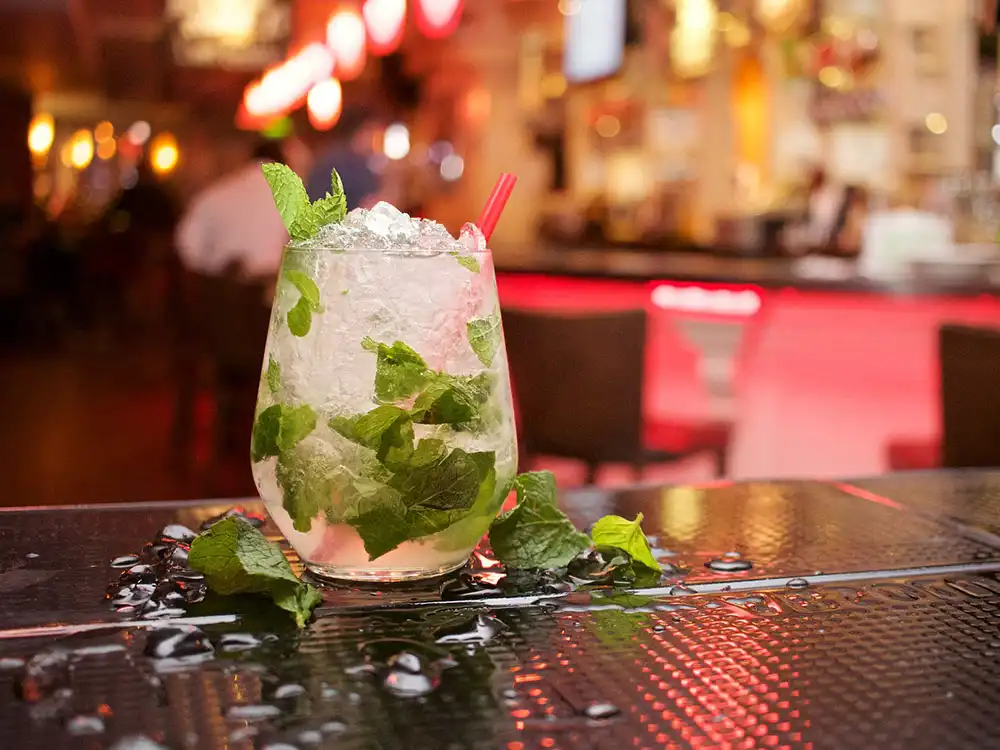Have you ever thought about the secret to making that perfect, refreshing cocktail you’ll love? Yep, you guessed it, it’s herbs! And not just any herbs, but those grown in your very own cocktail herb garden where you cultivate herbs specifically to use in your cocktails. A fusion of gardening and mixology, it can elevate your home bartending skills to an exciting new level.
The Concept of a Cocktail Herb Garden
Imagine stepping outside into your backyard, picking a handful of fresh mint, rosemary, or basil, then mixing it into a concoction that’s the envy of all your friends.
That’s the beauty of a cocktail herb garden. It’s a personal paradise of aromatic plants that are at your disposal, ready to infuse flavor into your homemade beverages.
Why You Should Consider Growing a Cocktail Herb Garden
The perks of a cocktail herb garden go beyond adding zing to your drinks. Planting and nurturing your garden can be a therapeutic hobby, boosting mental wellbeing.
Plus, you have the satisfaction of knowing exactly where your ingredients come from, and you can assure they’re grown organically, without any harmful chemicals.
Choosing the Right Herbs for Your Cocktail Garden

When it comes to selecting herbs for your cocktail garden, the possibilities are truly endless.
Essential Herbs for a Cocktail Garden
These are the big hitters in the cocktail herb world. These aromatic herbs complement an array of cocktails.
| Herb | Description |
|---|---|
| Mint | Distinct, refreshing flavor that adds a cool note to drinks |
| Basil | Aromatic, sweet note that balances and elevates fruit flavors |
| Rosemary | Pine-like flavor that adds a woodsy note to cocktails |
| Thyme | Adds a subtle, earthy note to cocktails |
| Cilantro | Unique, fresh flavor that adds an interesting twist to cocktails |
| Lavender | Used in infusions and syrups, adds a floral note to cocktails |
| Lemongrass | Adds a light, citrusy, and somewhat gingery note |
Other Herbs to Consider
| Herb | Description |
|---|---|
| Dill | Tangy, slightly bitter taste; provides a unique flavor to cocktails |
| Tarragon | Sweet, licorice-like flavor; an interesting addition to various cocktails |
| Sage | Strong, slightly bitter flavor; adds depth to cocktails |
| Parsley | Subtle, refreshing note; often overlooked but versatile |
| Chamomile | Used in teas and cocktails, often in the form of chamomile-infused syrups; slightly sweet, apple-like flavor |
| Borage | Flowers have a sweet taste, leaves impart a flavor reminiscent of cucumber |
| Lemon Verbena | Strong citrus flavor; a natural pairing for cocktails |
How to Plant a Cocktail Herb Garden

Now that you’ve got a green thumb itching to get started, here’s what you need to know.
Location, location, location
When it comes to setting up your cocktail herb garden, the most important factor to consider is the location.
Ideally, the location should be close enough that you can quickly grab fresh herbs as needed when making cocktails. If you have a space near your bar area, this could be an excellent spot for your herb garden.
Just make sure it receives at least six hours of sunlight per day. If you don’t have outdoor space available or if you live in an apartment, consider placing your herbs in a sunny windowsill.
Whether to grow your cocktail herb garden in the ground or in containers will largely depend on your available space, climate, and personal preference. Each method comes with its unique set of benefits and considerations.
Growing in the Ground
Planting directly in the ground often offers more room for your herbs to spread out and grow, especially for varieties that can become quite large, such as rosemary or mint. It also allows the plants to tap into the natural nutrients and microbes present in the soil.
One of the downsides of growing herbs directly in the ground is the potential for certain aggressive herbs, like mint, to spread and take over. This can be controlled with regular pruning or by using barriers to limit the spread.
Growing in Containers
Growing your cocktail herbs in containers can be a smart choice, especially if you’re dealing with limited space or unfavorable soil conditions. It’s perfect for balcony herb gardens, those living in apartments, indoor herb gardens, or homes without a suitable yard.
When growing herbs in pots, you have more control over the soil, drainage, and even the sunlight if the containers are movable. You can choose high-quality potting mix to provide your herbs with all the nutrients they need.
Growing in containers can prevent herbs like mint from taking over your garden.
Keep in mind that containers will need more frequent watering than in-ground plants, as the soil in pots tends to dry out faster. During hot weather, container plants may even require watering twice a day. Consider using self watering plant pots to ensure your herbs down dry out.
Starting Your Herb Garden: Seeds vs. Seedlings
Seeds are a cost-effective way to start a garden and provide a larger variety to choose from. However, they take longer to mature and require more care in the initial stages.
On the other hand, seedlings are young, partially grown plants. They’re more expensive but give you a head start. They’re also easier to care for and ideal if you’re a beginner or impatient to see your garden flourish.
Caring for Your Herbs
After planting, water the herbs, keeping the soil consistently moist but not waterlogged. Most herbs don’t like ‘wet feet’, so be careful not to overwater.
When planting in the ground, adding a layer of mulch around the plants helps retain soil moisture, suppresses weeds, and improves the overall soil health over time.
Don’t forget to fertilize your plants occasionally. Although herbs don’t require heavy feeding, a little bit of water soluble fertilizer or compost can provide necessary nutrients and stimulate growth.
Seasonal Considerations for Your Herb Garden
Understanding your herbs’ life cycles and how they interact with the seasons can enhance the success of your garden. Some herbs, like basil and dill, are annuals. They complete their life cycle in a single season and then die off.
Perennial herbs like rosemary, thyme, and mint, however, can survive for several years, going dormant in colder months and bouncing back when the weather warms up.
By planting a mix of annuals and perennials, you can keep your cocktail herb garden vibrant and productive throughout the year.
Using Your Cocktail Herbs

After weeks of tending to your garden, it’s finally time to harvest and use your herbs in creating exciting, flavorful drinks and cocktails. This part is all about blending mixology and creativity.
Harvesting Your Herbs
To harvest your herbs, simply snip off what you need using a sharp pair of scissors or pruners, making sure not to take more than a third of the plant at a time. This practice ensures that the plant remains healthy and can quickly regrow.
The best time to harvest is in the morning after the dew has dried but before the sun gets too hot. This is when the plants’ essential oils, which give herbs their aroma and flavor, are at their peak.
Infusing Herbs in Cocktails: A Basic Guide
When it comes to using herbs in cocktails, a light touch is usually best. The goal is to enhance and complement the flavors of your drink, not overpower them.
Muddling the Herbs
One of the most common ways to incorporate herbs into cocktails is through muddling. By gently crushing the herbs with a muddler, you can release their essential oils and flavors.
By gently crushing the herbs with a muddler, you can release their essential oils and flavors.
Infusing the Alcohol
Infusing alcohol with herbs is an artful practice that can enhance your cocktail-making experience. By allowing your favorite herbs to steep in spirits, you can develop intricate, botanical flavor profiles that elevate your drinks.
It’s as simple as filling a jar with your chosen herbs – be it basil, rosemary, or thyme – pouring in your alcohol of choice, and then patiently waiting. During this period, usually a few days to a week, the alcohol absorbs the aromatic essence and flavors of the herbs.
The result is a unique infusion that not only adds complexity to your cocktails, but also allows you to experiment and customize your drinks.
Pairing Herbs with Different Types of Drinks
Pairing herbs with the right spirit can create a harmonious balance. For example, the piney, slightly citrusy flavor of rosemary pairs well with gin, which often has similar flavor notes. On the other hand, mint, with its refreshing coolness, pairs perfectly with rum in classic cocktails like the mojito.
Don’t be afraid to experiment and find new combinations that you enjoy. For instance, the subtle anise flavor of tarragon might be a revelation in a vodka-based cocktail, and sage could add a savory twist to your bourbon drinks.
Creating Syrups and Garnishes
Herb-infused syrups can introduce sweetness and herbal notes simultaneously.
To make an herb-infused syrup, add herbs to a basic simple syrup (equal parts sugar and water, heated until sugar dissolves), then let steep for a few hours before straining.
Garnishing with Herbs
Finally, don’t forget the visual appeal of herbs. A sprig of thyme or a few leaves of mint can add the perfect finishing touch to your cocktails. Not only do they look beautiful, but they also provide a burst of aroma every time you lift the glass.
Classic Herb Cocktail Recipes

- Classic Mojito – Muddle mint, lime, and sugar, then add ice and pour rum and club soda over it.
- Strawberry Basil Margarita – Muddle fresh strawberries and basil leaves, then add tequila, lime juice, and simple syrup. Shake well with ice and strain.
- Rosemary Gin Fizz – Muddle rosemary, lemon juice, and simple syrup, then add gin and ice. Top with club soda and gently stir.
- Thyme Bourbon Smash – Muddle lemon wedges, simple syrup, and thyme. Add bourbon, shake well with ice, and strain into a rocks glass.
- Cilantro-Lime Margarita – Muddle the cilantro at the bottom of a shaker. Add the tequila, orange liqueur, lime juice, and simple syrup. Shake well with ice and strain into a salt-rimmed glass.
- Lavender French 75 – Combine lavender simple syrup, lemon juice, and gin in a shaker with ice. Shake well, strain into a flute, and top with champagne.
- Lemongrass Collins – Combine gin, lemongrass syrup, and lemon juice in a shaker with ice. Shake well, strain into a tall glass over ice, and top with club soda.
- Dill & Cucumber Martini – Muddle cucumber and dill in a shaker, add vodka and vermouth, shake well with ice, and strain into a martini glass.
- Tarragon G&T – Muddle a few sprigs of tarragon at the bottom of a glass, add gin and ice, then top with tonic water.
- Sage Brown Derby – Muddle the sage leaf at the bottom of a shaker, add the other ingredients and ice, then shake well and strain into a cocktail glass.
- Parsley Gin Julep – Muddle a handful of parsley leaves and the simple syrup in a glass, add the gin and fill with crushed ice, then stir.
- Chamomile Honey Bee – Combine chamomile infused gin, lemon juice, and honey syrup in a shaker with ice, shake well, and strain into a cocktail glass.
- Borage Lemonade – Muddle a few borage leaves in a glass, add the vodka, lemon juice, and simple syrup, then add ice and stir well. Garnish with borage flowers.
- Lemon Verbena Whiskey Sour – Muddle a few lemon verbena leaves in a shaker, add the bourbon, lemon juice, and simple syrup, then shake well with ice and strain into an ice-filled rocks glass.
Experimenting with Your Own Creations
Now that you’ve tried some classic herb-infused cocktails, it’s time to create your own unique concoctions! Experiment by combining different herbs or adding unexpected ingredients like jalapenos or fruit.
Don’t be afraid to take risks and try new things, even if they sound strange. Who knows, you may just create the next viral cocktail sensation!
Conclusion
Embracing the cocktail herb garden lifestyle not only enhances your cocktails, but also contributes to a healthier, more sustainable lifestyle. With the added benefit of mindfulness and mental well-being, it’s a win-win all around.
Inspired already? Well, why not think about expanding your cocktail herb garden? Perhaps add some edible flowers, or delve into the world of spicy peppers for some truly bold cocktails.
Whatever your choice, the joy of tending to your own cocktail herb garden and then savoring the fruits (or rather, herbs) of your labor is an unparalleled experience. So, go ahead, embrace the cocktail herb garden – your taste buds will thank you!
FAQ: Cocktail Herb Garden
How long should herbs sit in alcohol?
Herbs should infuse in alcohol for about one week, but this can vary depending on the herb and personal preference for flavor strength.
What herbs should not be mixed with alcohol?
Certain herbs like Comfrey and Wormwood should be avoided due to potential health risks when consumed in large quantities or over a long period.
What alcohol is best to infuse herbs?
Neutral spirits like vodka or light rum are typically best for infusing herbs as they don’t compete with the herb flavors.
Can you infuse multiple herbs at once?
Yes, multiple herbs can be infused at once to create complex flavors, but be mindful of each herb’s strength to maintain balance.
How long does herb-infused alcohol last?
Herb-infused alcohol can last up to a year if stored in a cool, dark place and properly sealed.









